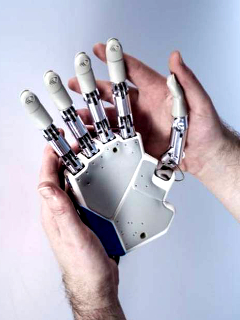Bionic hand feels real
 A new bionic hand fuses a user’s nervous and skeletal systems.
A new bionic hand fuses a user’s nervous and skeletal systems.
Australian and international scientists have created a bionic hand that seamlessly integrates with the body, boasting years of successful operation.
Traditionally, restoring sensorimotor function following amputation has proven to be a considerable challenge due to the lack of human-machine interfaces that deliver consistent control, feedback, and attachment.
However, a new solution has emerged in the form of a transradial neuromusculoskeletal prosthesis - a bionic hand directly connected to the user's nervous and skeletal systems.
The innovative prosthetic, developed in 2018, was fitted to a Swedish woman who had lost her right hand and relies on artificial intelligence to interpret her commands.
To achieve this feat, researchers surgically implanted titanium devices into the radius and ulna bones of a patient with below-elbow amputation.
This allowed for the creation of electromuscular constructs by repositioning severed nerves to free muscle grafts.
Electrodes were implanted into the native muscles, free muscle grafts, and ulnar nerve.
These electrodes were connected through percutaneous extensions to the titanium implants, enabling direct skeletal attachment and bidirectional communication with a prosthetic hand.
In everyday use, the bionic hand has showed remarkable improvements in prosthetic function, reduced post-amputation discomfort, and an increased quality of life.
Notably, sensations generated through direct neural stimulation were consistently felt on the phantom hand throughout the study.
Importantly, the patient continues to benefit from this groundbreaking prosthesis during daily activities.
The conventional artificial limbs of the past have often been hampered by discomfort and unreliable control. Neuromusculoskeletal interfaces, like the one implemented in this bionic hand, overcome these limitations, offering a reliable means for everyday prosthetic use firmly anchored within the skeletal system.
More details are accessible here.








 Print
Print